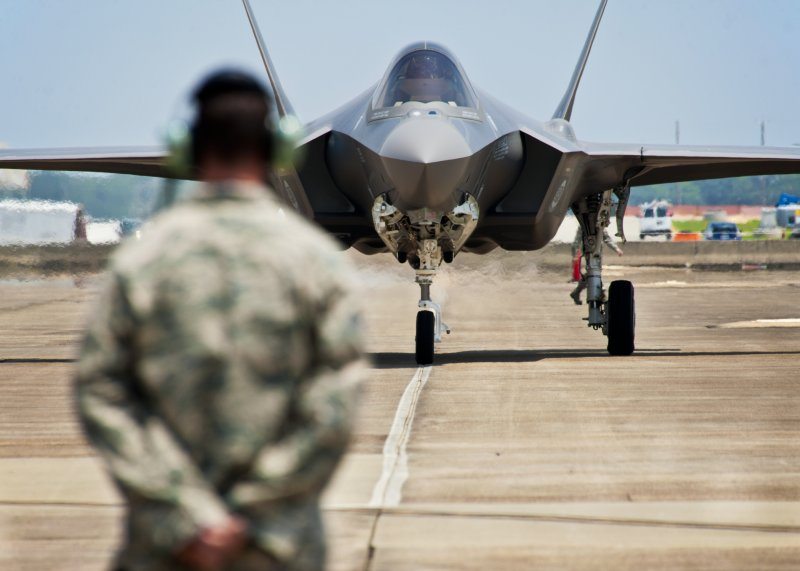The US military temporarily grounded its entire F-35 Joint Strike Fighter jet fleet at the weekend after an apparent engine oil leak, the latest glitch for the much-vaunted program.
Joint Strike Fighter program officials described Friday’s move as “prudent action” and most the F-35s were back on line the next day after inspections, the latest in a series of technical problems and delays that have bogged down the costliest weapons program in Pentagon history.
It came after a pilot was alerted to an engine oil problem while in flight on Tuesday and landed safely at Marine Corps Air Station Yuma in Arizona.
Out of all 97 fighter jets currently available, most have been inspected and cleared, according to a program official. Three did not pass the tests.
“Upon inspection, the engines found with fittings in acceptable condition will be returned to service,” the F-35 Joint Program Office said in a statement.
“Aircraft with questionable fittings will remain off the flight schedule until corrected.”
The inspections come less than a month before the F-35B makes its international debut.
Engine maker Pratt & Whitney, a division of United Technologies Corp., said that it took about 90 minutes to inspect each engine and “nearly all” jets had been inspected and cleared to resume flights by late Saturday.
Pratt & Whitney spokesman Matthew Bates stressed that the F135 engine has successfully completed nearly 32,000 hours of combined ground and flight testing, including more than 16,000 hours of operational flight.
The F-35 has been touted as the ultimate stealth-attack plane able to evade radar detection.
But it has suffered one setback after another, putting the project seven years behind schedule and vastly over budget.
The Pentagon has estimated it would spend $391.2 billion on 2,443 aircraft, with each plane costing a staggering $160 million. But additional delays could raise costs even further.










